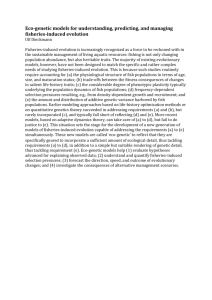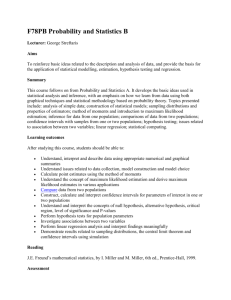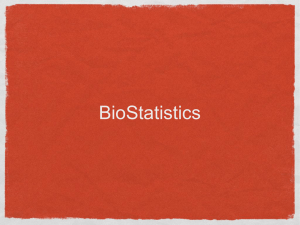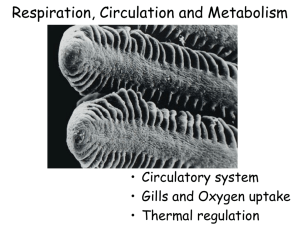Week 6
advertisement
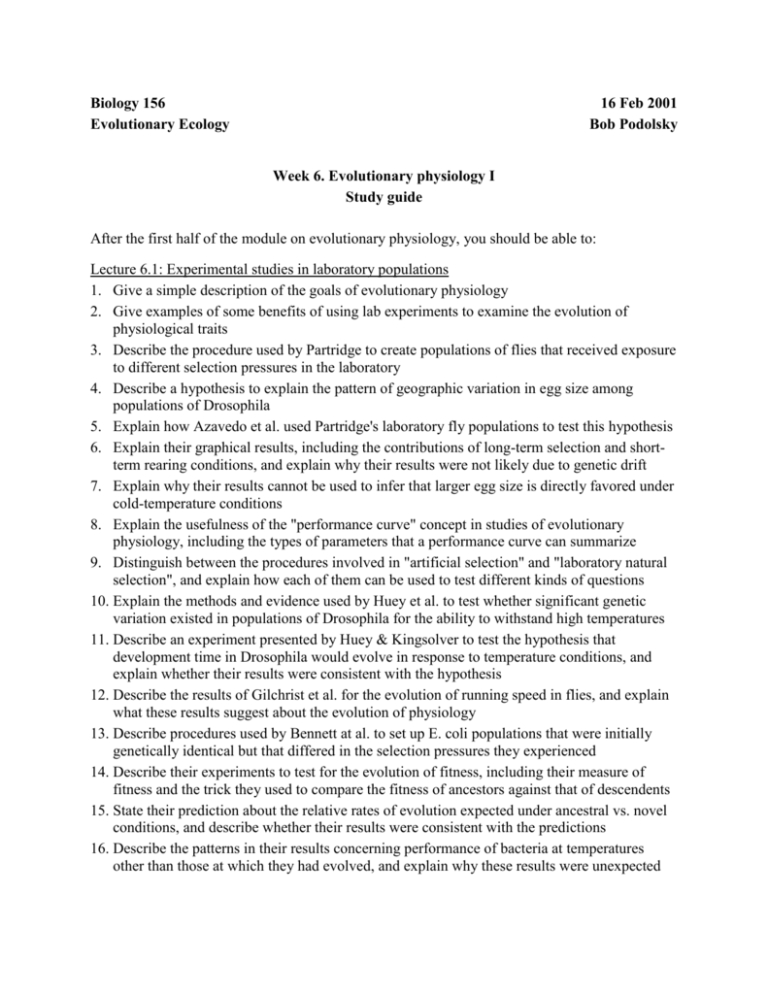
Biology 156 Evolutionary Ecology 16 Feb 2001 Bob Podolsky Week 6. Evolutionary physiology I Study guide After the first half of the module on evolutionary physiology, you should be able to: Lecture 6.1: Experimental studies in laboratory populations 1. Give a simple description of the goals of evolutionary physiology 2. Give examples of some benefits of using lab experiments to examine the evolution of physiological traits 3. Describe the procedure used by Partridge to create populations of flies that received exposure to different selection pressures in the laboratory 4. Describe a hypothesis to explain the pattern of geographic variation in egg size among populations of Drosophila 5. Explain how Azavedo et al. used Partridge's laboratory fly populations to test this hypothesis 6. Explain their graphical results, including the contributions of long-term selection and shortterm rearing conditions, and explain why their results were not likely due to genetic drift 7. Explain why their results cannot be used to infer that larger egg size is directly favored under cold-temperature conditions 8. Explain the usefulness of the "performance curve" concept in studies of evolutionary physiology, including the types of parameters that a performance curve can summarize 9. Distinguish between the procedures involved in "artificial selection" and "laboratory natural selection", and explain how each of them can be used to test different kinds of questions 10. Explain the methods and evidence used by Huey et al. to test whether significant genetic variation existed in populations of Drosophila for the ability to withstand high temperatures 11. Describe an experiment presented by Huey & Kingsolver to test the hypothesis that development time in Drosophila would evolve in response to temperature conditions, and explain whether their results were consistent with the hypothesis 12. Describe the results of Gilchrist et al. for the evolution of running speed in flies, and explain what these results suggest about the evolution of physiology 13. Describe procedures used by Bennett at al. to set up E. coli populations that were initially genetically identical but that differed in the selection pressures they experienced 14. Describe their experiments to test for the evolution of fitness, including their measure of fitness and the trick they used to compare the fitness of ancestors against that of descendents 15. State their prediction about the relative rates of evolution expected under ancestral vs. novel conditions, and describe whether their results were consistent with the predictions 16. Describe the patterns in their results concerning performance of bacteria at temperatures other than those at which they had evolved, and explain why these results were unexpected 17. Describe the results of Partridge et al. concerning shifts in fecundity for populations of Drosophila evolving under different temperature conditions 18. Explain what these results suggest about the evolution of performance curves for egg production 19. Explain what Service et al. showed concerning shifts in tolerance for populations of Drosophila that had been selected for certain life-history characteristics 20. Describe the goal of studies by Gibbs et al. on the evolution of physiology in Drosophila 21. Explain how their results support a plausible mechanism for the evolution of desiccation tolerance Lecture 6.2. Comparative studies in natural populations 22. Distinguish among three different models for the evolution of performance in response to a change in environmental conditions 23. Given a hypothetical data set, explain why those data would tend to support one or another of these models 24. Explain why testing for co-adaptation between two traits using comparative data can lead to misleading results 25. Show graphically why information about the degree of relatedness may be critical for drawing correct conclusions from such results 26. Describe the type of data that Huey and Kingsolver collected to test hypotheses concerning the evolution of sprint speed in iguanid lizards 27. Explain what conclusions they drew from a graphical presentation of their results 28. State two alternative adaptive hypotheses to explain the correlation they found between optimum temperature and critical maximum temperature for sprinting 29. Give a definition of endothermy and describe where it is generally found among vertebrates 30. Describe the general goals of Block et al.'s study of the evolution of endothermy, including why she chose the particular taxonomic group for study 31. Describe two features necessary for the evolution of endothermy, and differences in such features among three different groups within the scombrids 32. Explain what conflicting information existed concerning the number of times that endothermy evolved independently in the scombrids 33. Describe the type of data that Block et al. collected to address the hypothesis that billfishes and buttefly mackerels had evolved endothermy independently, and how those data supported the hypothesis 34. Explain how three unique traits of tunas are functionally related: systemic endothermy, the location of aerobic musculature, and swimming form 35. Explain what the data of Block et al. showed about the order in which these traits appeared in the history of the scombrids, and what this order shows about the functional evolution of body design

